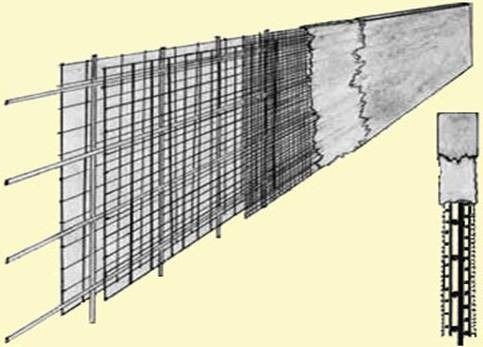Ferrocement concrete is a composite material widely recognized for its strength, versatile applications, and cost-effectiveness. Unlike traditional concrete, which relies on coarse aggregates, ferrocement uses fine aggregates and reinforced wire mesh, leading to a dense and durable material. Here, the composition, applications, and advantages of ferrocement are discussed.
Composition and Structure of Ferrocement
- Cement: Ordinary Portland Cement is used as the binder.
- Fine Aggregates: Sand, which provides the necessary bulk and strength.
- Wire Mesh/Reinforcement: Layers of wire mesh or metallic fibers, which significantly enhance tensile strength and ductility.
- Water: Essential for the hydration process and workability.
- The wire mesh is placed in multiple layers, and the cement-sand mortar is applied over it, ensuring that the mesh is entirely encapsulated.
Read Also- Lightweight Concrete – Making And Applications
Applications of Ferrocement Concrete
Ferrocement finds a wide range of applications due to its unique properties:
- Building Components: Prefabricated panels, roofs, walls, and floor slabs benefit from its strength and ease of fabrication.
- Repair Works: Reinforcement of damaged or deteriorated concrete structures.
- Marine Structures: Ideal for boats, barges, and even underwater structures due to its impermeability and resistance to marine conditions.
- Architectural Elements: Sculptures, decorative facades, and architectural panels leverage its ability to be molded into complex shapes.
- Water Tanks: Used in the construction of robust and leak-proof water storage tanks.
Advantages of Ferrocement Concrete
Ferrocement Concrete offers numerous advantages over traditional construction materials:
- High Strength-to-Weight Ratio: The wire mesh reinforcement provides high tensile strength while keeping the material lightweight.
- Durability: Resistant to cracking, corrosion, and impact, leading to long-lasting structures.
- Versatility: Easily molded into various shapes and sizes, allowing for innovative architectural designs.
- Cost-Effectiveness: Requires less material and labor compared to conventional reinforced concrete.
- Sustainability: The use of fine aggregates and minimal concrete makes it an environmentally friendly option.
Challenges for Ferrocement Concrete
- Labor-Intensive: The placement of wire mesh and the application of mortar require skilled labor.
- Quality Control: Ensuring the uniform encapsulation of the wire mesh and proper curing is essential for optimal performance.
- Limited Awareness: Not as widely recognized or adopted as conventional construction methods, particularly in regions with well-established construction practices.
Final Words:
Ferrocement concrete has a vast potential to impact the construction industry. hanger in the construction industry, offering a blend of strength, durability, and versatility that few materials can match. Its potential for innovative applications and sustainable construction makes it a material worth considering for modern construction projects. As awareness and expertise grow, we can expect to see even more groundbreaking uses for ferrocement in the future.
Read Also-
Different Methods of Concrete Curing – Concrete Technology
Cellular Lightweight Concrete – Materials and Applications
Basalt Fiber Reinforced Concrete: Promising Material
Ground Granulated Blast Furnace Slag (GGBS) Applications in Concrete
